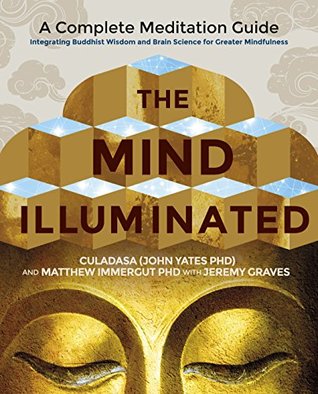More on this book
Community
Kindle Notes & Highlights
Started reading
May 22, 2020
One part of your mind might wear a big hat marked “I” for a short period, but it has no inherent abil...
This highlight has been truncated due to consecutive passage length restrictions.
Ultimately, meditation means training a complex, multipart system (the mind) to work cooperatively, coherently, and consistently through a shared consensus toward common goals.
If you can embrace that fact and let go of the notions of “I,” “me,” and “my mind,” your practice will go much more smoothly.
CALMING THE MONKEY-MIND
“Monkey-mind” describes an especially agitated state where attention jumps rapidly from one thing to the next, like an excited monkey.
This is quite different from mind-wandering, which happen...
This highlight has been truncated due to consecutive passage length restrictions.
With monkey-mind, you’ll notice attention doesn’t stay anywhere for more than a few seconds, moving from the breath, to sounds, to sensations, to thoughts, to me...
This highlight has been truncated due to consecutive passage length restrictions.
This, too, is different from mind-wandering, where you can get lost for long periods in a single ...
This highlight has been truncated due to consecutive passage length restrictions.
This constant movement of the mind makes you feel restless and must be dealt with differently than ordinary mind-wandering.
The antidote that calms monkey-mind is to become “grounded in the body.”
In other words, return to Step One or Two of the Gradual Four-Step Transition to the Meditation Object described in Stage One.
The agitation of monkey-mind is due to thoughts and emotions, so “body awareness” works by shifting attention and awareness away from the contents and activities of the mind.
Some grounding techniques include scanning the sensations of the body part by part, attending to any strong bodily sensation, evoking whole body awareness, or bec...
This highlight has been truncated due to consecutive passage length restrictions.
The basic rule for training the mind in meditation is to always intentionally selec...
This highlight has been truncated due to consecutive passage length restrictions.
That is, you must intentionally choose the “area” (i.e., breath sensations, bodily sensations, thoughts, or some combination...
This highlight has been truncated due to consecutive passage length restrictions.
Every practice for achieving stable attention is based ...
This highlight has been truncated due to consecutive passage length restrictions.
You let the mind keep moving, but only within the boundaries that you’ve intentionally set.
OVERCOMING IMPATIENCE AND CULTIVATING JOY
It’s inevitable that, fairly soon, you’ll get impatient and think, “This isn’t working, there must be an easier way,” or “I could be doing something better with my time.”
These thoughts and feelings arise because something you wanted, hoped for, or e...
This highlight has been truncated due to consecutive passage length restrictions.


